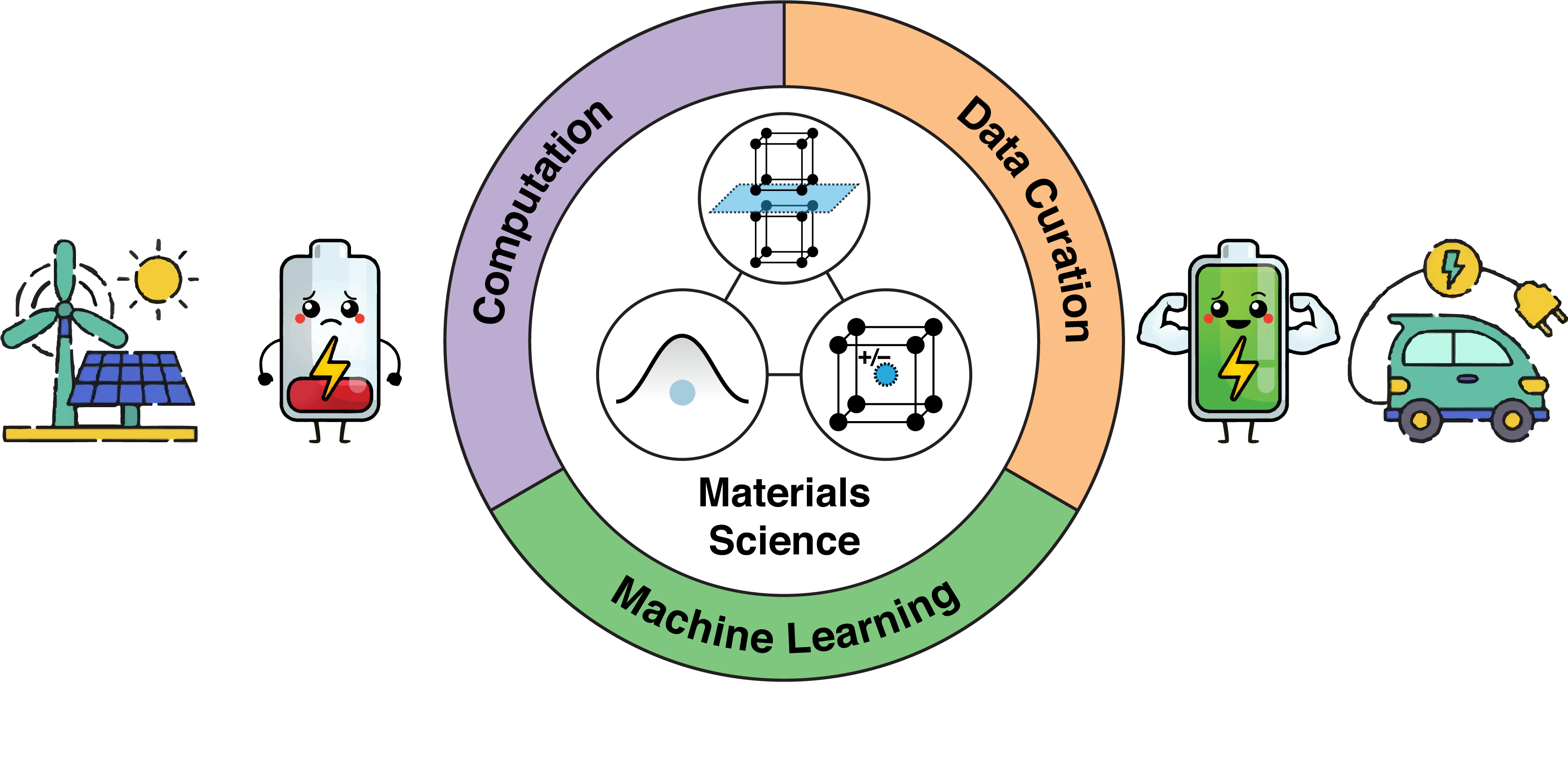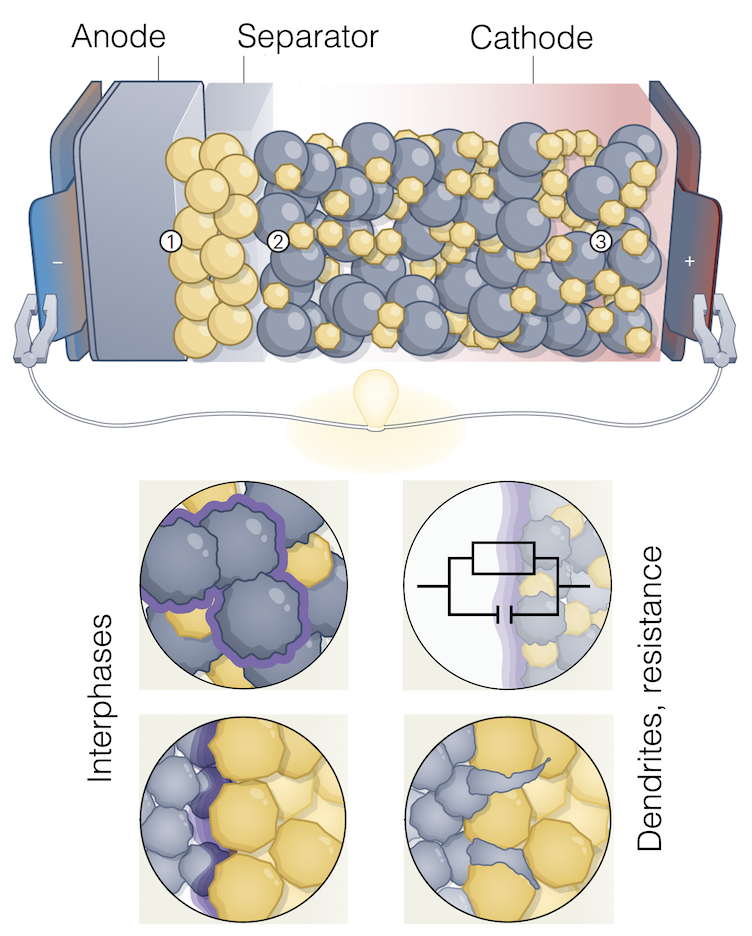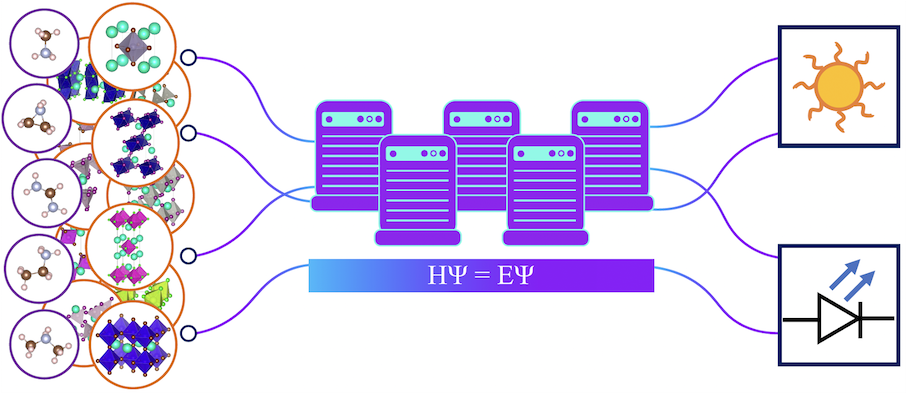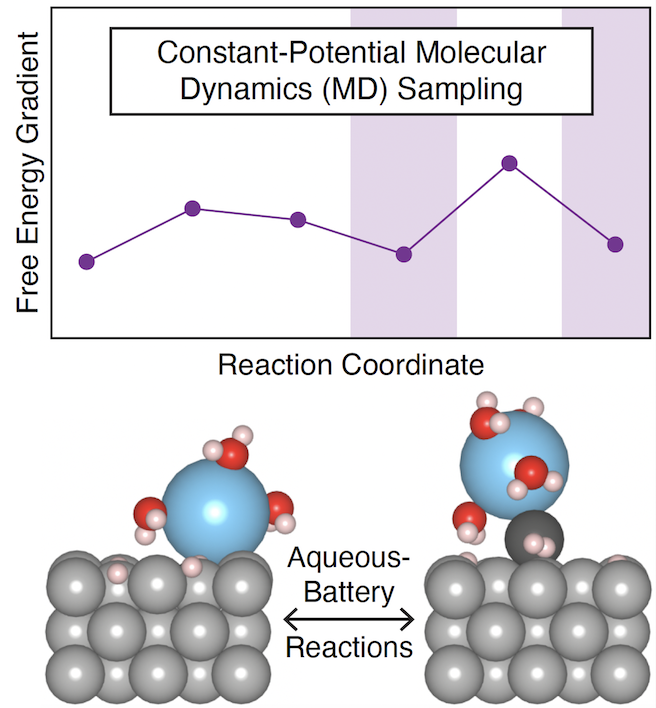All-solid-state batteries (ASSBs) hold promise as a safer and higher-energy-density alternative to state-of-the-art lithium-ion batteries. One of the key challenges in the development of ASSBs is the understanding and control of the interfaces between the solid electrolyte and the electrodes (the right figure[ref]). (Electro)chemical reactions take place at unstable battery interfaces and produce chemically-distinct interlayers known as interphases. The interphases' microstructural, thermodynamic, electrochemical, and ion-transport properties are crucial to the device performance such as lifetime, reliability, and (dis)charge rate of ASSBs. The group aims to understand and optimize the electrolyte-electrode interface in ASSBs using first-principles calculations aided with data-driven methods, and to realistically address the remaining interface-related key challenges for full-scale commercialization of ASSBs.
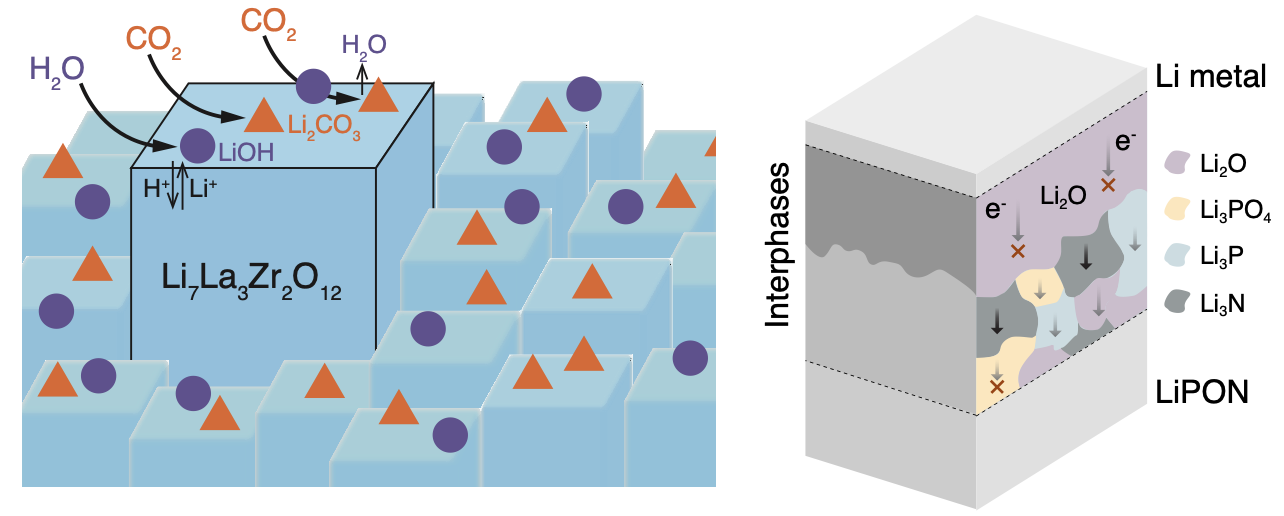
Example 1. First-principles investigations of solid-electrolyte surfaces and interfaces.[1][2]
Relevant references on first-principles mechanism investigation
